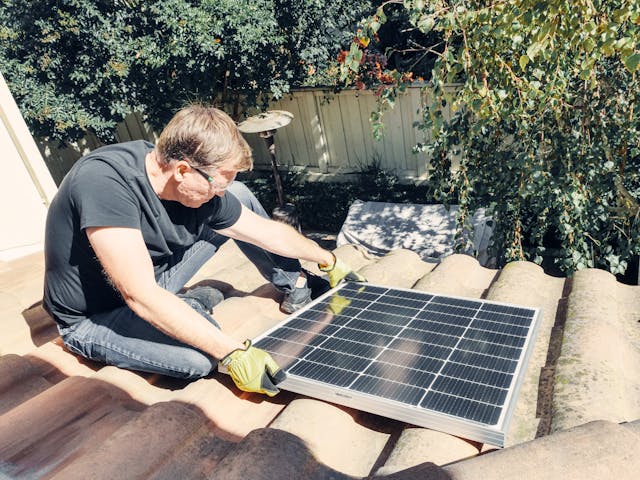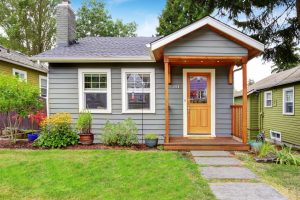- Invest in a concrete foundation for durability, considering soil type and ensuring proper drainage to protect against water damage.
- Use high-quality materials and construction techniques tailored to your climate for long-term resilience and reduced maintenance.
- Design your home with the local climate in mind, optimizing features for weather protection and energy efficiency.
- Incorporate sustainability through the use of renewable energy sources and eco-friendly materials, enhancing longevity and reducing utility costs.
For many, a home is not just a place to live; it’s a sanctuary that offers protection and comfort. As future homeowners or those embarking on the journey of building a new house, understanding how to create a structure that withstands the test of time is paramount.
Building a durable home requires careful planning, quality materials, and an understanding of the environment in which it resides. Below are essential tips that ensure your home remains strong, safe, and beautiful for generations to come.
Prioritizing a Strong Foundation
A strong foundation is essential as it provides the basis on which the entire home will be built on. Here are four factors you need to consider in a solid foundation:
Invest in a Concrete Foundation
The foundation is arguably the most critical part of your home. It supports everything above it, so ensuring its strength and durability is non-negotiable. A strong concrete foundation is highly recommended for its longevity and resistance to the elements.
Concrete is robust, resistant to fire, and less susceptible to rot and pest infestation, making it an excellent choice for a foundation that lasts. Moreover, a well-laid concrete foundation can significantly reduce the risk of water damage and foundation settlement.
Consider the Soil Type
The type of soil your home is built on can significantly affect the foundation’s stability. Different soil types react differently under pressure and with varying moisture levels. Before construction, conduct a soil test to determine its bearing capacity and adjust your foundation design accordingly. This step ensures that your home can withstand shifts in the ground without significant damage.
Ensure Proper Drainage
Water is a foundation’s worst enemy. Poor drainage can lead to water pooling around the foundation, causing it to weaken over time. Ensure that your home’s design includes an effective drainage system that directs water away from the foundation. This system may include gutters, downspouts, and graded landscaping that guides water away from the house.
Regular Maintenance and Inspection
Even the strongest foundations require regular maintenance and inspection to ensure their integrity over time. Check for cracks, water damage, and other signs of wear and tear regularly. Early detection of these issues can prevent them from becoming major problems. Additionally, keep an eye on the landscape around your home to ensure it continues to support proper drainage and does not put additional stress on the foundation.
With a strong foundation, builders will have an easier time building the rest of the home. This will also ensure that your new house will be able to withstand the test of time.
Quality Materials and Construction Techniques
 Using high-quality materials and construction techniques is vital for building a home that lasts. From the roof to the floors, investing in materials that are durable, resistant to the elements, and appropriate for your climate can save you money and headaches in the long run. When selecting materials, consider their lifespan, maintenance requirements, and how they will perform in your specific environmental conditions.
Using high-quality materials and construction techniques is vital for building a home that lasts. From the roof to the floors, investing in materials that are durable, resistant to the elements, and appropriate for your climate can save you money and headaches in the long run. When selecting materials, consider their lifespan, maintenance requirements, and how they will perform in your specific environmental conditions.
Wood, for example, is a popular choice for framing due to its strength and versatility. However, it’s crucial to choose treated wood that’s resistant to moisture and pests. Similarly, for roofing, materials like metal or tiles might offer better longevity and resistance to harsh weather compared to traditional shingles.
Design for Your Climate
Designing your home with the local climate in mind is crucial for its longevity. Different climates pose different challenges, from heavy snowfall and cold temperatures to high humidity and heat. Features like overhangs, insulation, and the type of windows and doors can all be optimized to protect your home from the local weather conditions. For instance, homes in tropical climates benefit from large overhangs and cross-ventilation to manage heat and humidity, while homes in colder regions require robust insulation and weatherproofing to handle the cold and snow.
Sustainability and Energy Efficiency

Building a home that lasts isn’t just about structural integrity; it’s also about creating a sustainable and energy-efficient environment. Sustainable building materials, solar panels, energy-efficient appliances, and water-saving fixtures not only contribute to a healthier planet but also reduce the cost of utilities over time. Additionally, incorporating renewable energy sources can provide long-term savings and make your home more resilient to power outages and energy price fluctuations.
Building a home that can withstand the test of time requires attention to detail, from laying a strong concrete foundation to choosing quality materials and considering the local climate in your design. By investing in a robust foundation, prioritizing durability, and focusing on sustainability, you can create a safe, comfortable, and lasting sanctuary for you and your family.
Remember, the key to a long-lasting home is not just in its construction but in regular maintenance and care. With these tips, your dream home will not only stand strong against the elements but will also be a legacy that lasts for generations.






